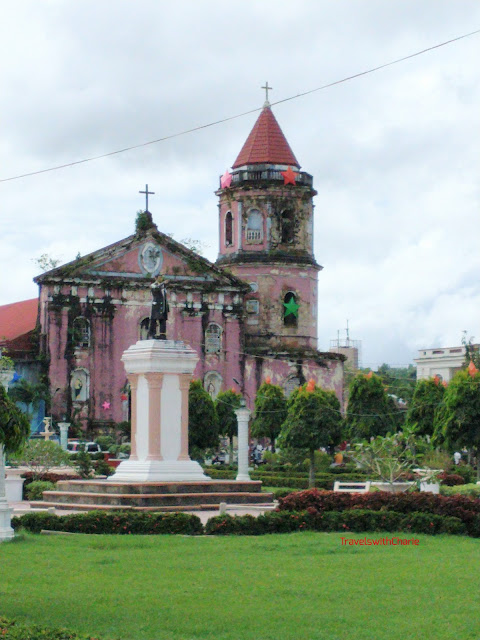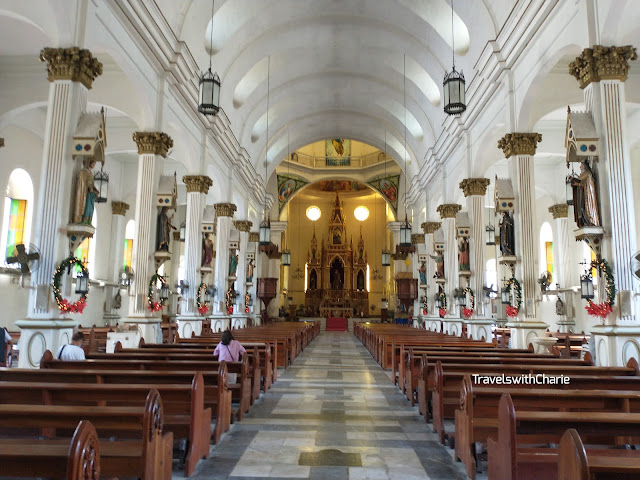From Sigma, it was less than an hour's drive to Dumarao where we visited the pink church of Our Lady of the Snows. Dumarao is the last town in Capiz before reaching the border between Capiz and Iloilo.
The historical church and convent of Santa Barbara in Iloilo is worth a stop to see the beautifully preserved convent with its original wooden floor and wrap-around balcony.
St. Anne's Church
Our first stop the following day was at Molo Church or St. Anne's Church which is dedicated to 16 female saints. Their statues adorn the pillars that lead up to the altar. Miagao Church is one of four Baroque churches designated as UNESCO World Heritage site under the collective title "Baroque churches of the Philippines". It dates back to the 18th century and was a fortress church as the town defended itself repeatedly from Muslim encroachment. Notice the tropically inspired bas reliefs on the façade of the church.
We entered Antique from the south of the province passing through the town of Hamtic and across many of its old bridges built during the American occupation.
We were just in time to watch the sunset in Culasi, Antique. Culasi is the jumping off point for the famous Mararison Island.
Kalibo, Aklan
We reached Kalibo, Aklan by nightfall. It was the Christmas season and the town was all decked out with colorful lights and holiday finery.
Then the rain poured heavily as we drove home to Roxas City in Capiz. Some of the places we passed had collected heavy amounts of rainfall and our compact car waded through flooded roads. What a relief it was to be back home after a harrowing drive!
*****
Images by TravelswithCharie








